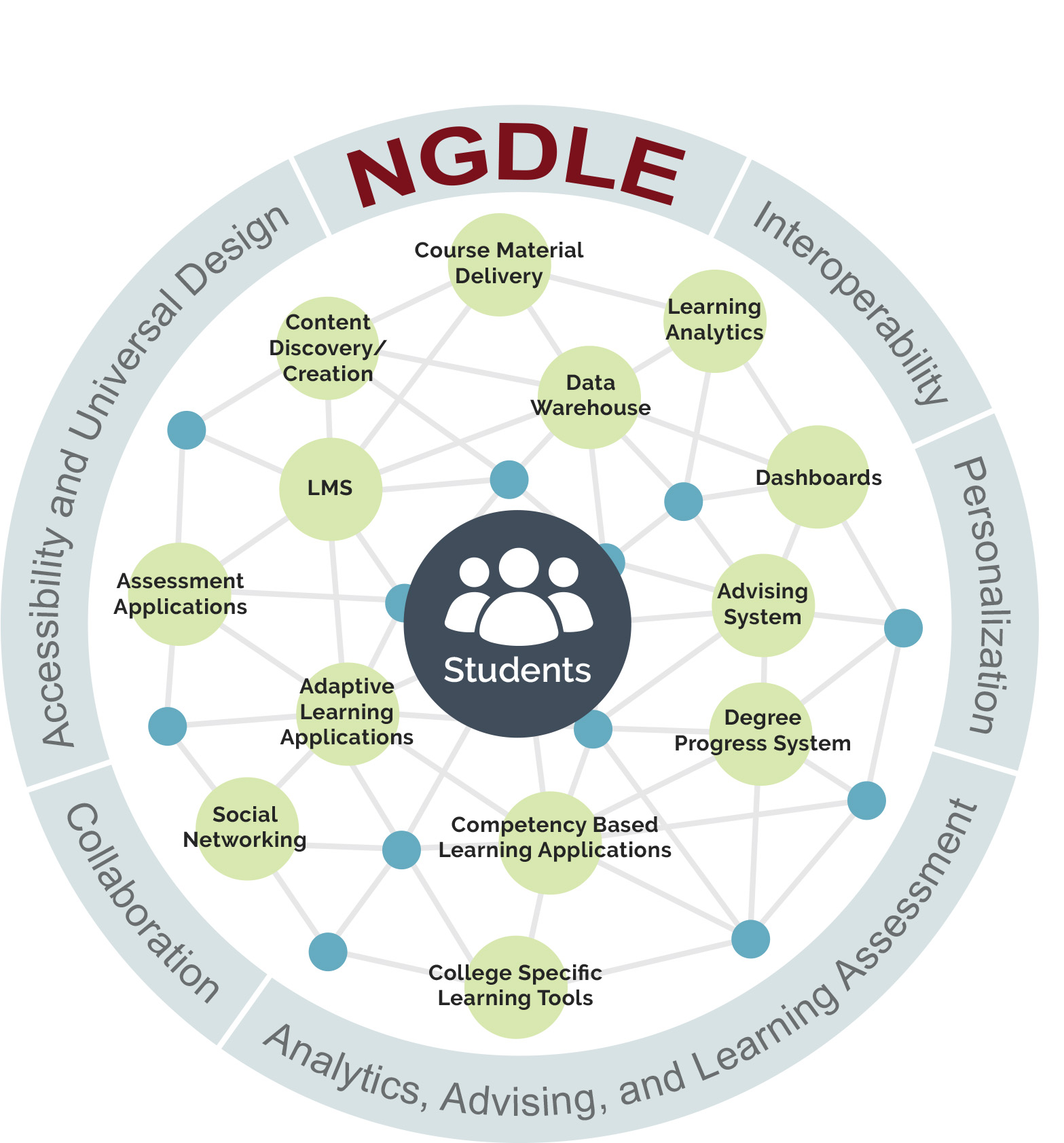The next generation digital learning environment (NGDLE) is a key influencer for the University of Minnesota when considering appropriate paths towards the future of higher education. The NGDLE is a framework outlined in a research report by EDUCAUSE. The report describes how the future will focus on creating an environment or ecosystem of interconnected learning tools built on common standards. The ecosystem would then enable colleges, departments, and instructors to select tools that customize and extend the LMS to meet their unique teaching and learning needs.
What does an NGDLE look like?
EDUCAUSE relates it to Lego bricks, or a “toolbox of applications, content and platforms that could be assembled in custom ways” based on how the individual or institution wants to build it. These Lego bricks represent a variety of learning technologies built using common standards and can be customized to create an interoperable and customized learning environment that can fit unique individual or departmental goals. The tools in the environment would offer a seamless user experience, facilitating easy navigation among integrated systems for students and the smooth transfer of data between tools for instructors and program administrators. In an NGDLE ecosystem, the learning management system (LMS) handles user- and course-administration and serves as an integration hub.
Since standards-compliant data is freely shared amongst the components, analytics would be easier to gather and make use of. The use of analytics could create a more personalized experience that helps students, faculty, and advisors to set program and individual learning goals and objectives, and track progress toward mastery or completion.
Since these goals often go beyond current LMS functions, an NGDLE would speed progress toward new models of education like competency-based, adaptive, and personalized learning.
For an NGDLE to function as envisioned it must:
- Support interoperability and maximize ease of use
- Facilitate customization and personalization of learning environments
- Increase the availability and power of analytic tools targeted to learners, instructors, advisors, and academic administrators
- Enhance and enrich learning assessment
- Enable collaboration across courses, programs, and institutions
